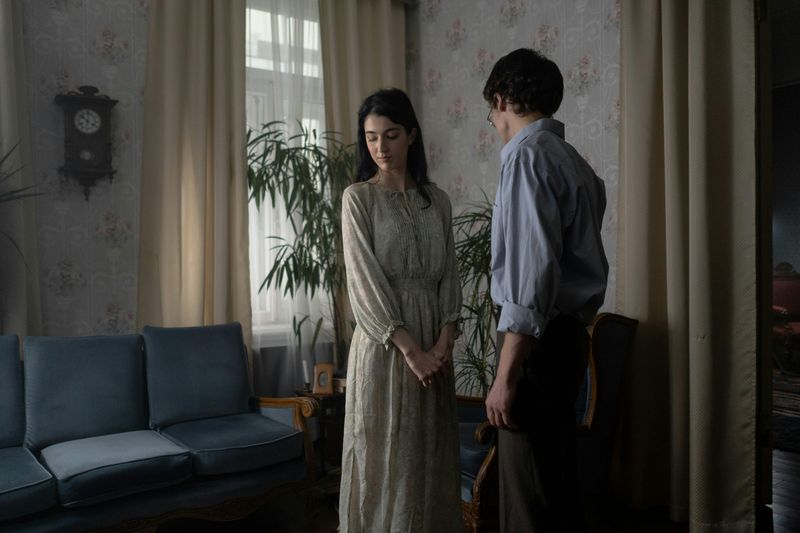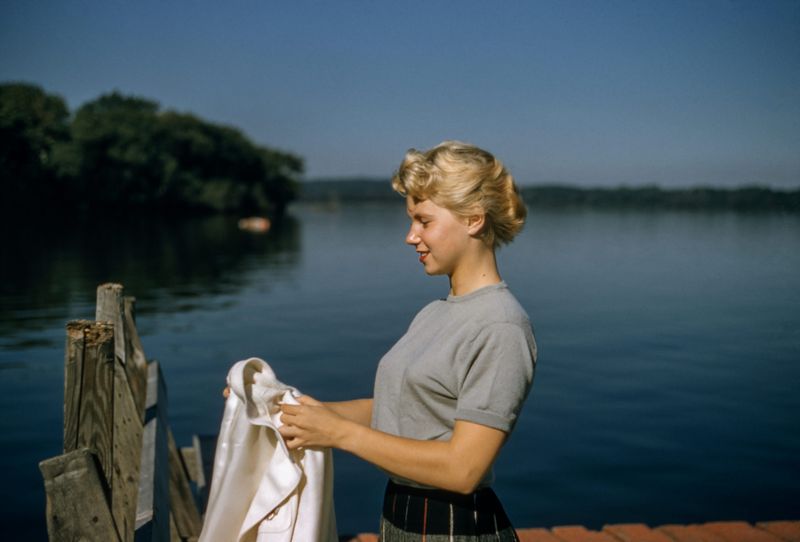13 Marriage Beliefs from the 1950s That Don’t Work Today

Marriage has changed dramatically since the 1950s when rigid roles and expectations dominated relationships. Back then, couples followed strict social rules that shaped everything from household duties to career choices. Today’s marriages look completely different, with partners creating their own paths based on equality and personal fulfillment rather than outdated traditions.
1. Wives Should Quit Their Jobs After Marriage

The 1950s ideal dictated that once married, women should give up their careers and devote themselves exclusively to running a perfect household.
Financial independence wasn’t just discouraged—it was often forbidden by husbands who viewed themselves as sole providers. A working wife suggested her husband couldn’t support the family properly.
Modern couples recognize the value of dual incomes and career fulfillment for both partners. Today’s marriages thrive when both individuals pursue their professional goals while supporting each other’s ambitions.
2. Husbands Handle All Financial Decisions

Money matters belonged exclusively to men in 1950s marriages. Wives received household allowances but remained largely uninformed about investments, savings, or major purchases.
Banking was considered too complex for the female mind. Many women couldn’t even open accounts without their husband’s signature, creating dangerous dependency.
Financial partnership represents the healthier approach embraced by today’s couples. Shared decision-making about money reduces resentment and builds mutual trust, while ensuring both partners develop essential financial literacy regardless of who earns more.
3. Separate Beds Make Better Marriages

During that era, couples avoided nighttime intimacy by resting separately, a standard that television programs such as I Love Lucy helped normalize for audiences.
Physical distance symbolized respectability and proper boundaries. Parents worried about children seeing them share a bed, considering it somehow improper or scandalous.
Modern couples understand that physical closeness strengthens emotional bonds. Today’s healthy relationships embrace intimacy rather than hiding it, recognizing that shared sleeping spaces foster communication and connection that separate beds simply cannot provide.
4. Wives Must Serve Dinner Promptly at 6

Like clockwork, dinner was served in the 1950s, with wives hustling to meet the exact moment their husbands arrived, no matter how much it disrupted the rest of the household.
Marriage manuals actually advised women to time cooking perfectly so food would reach optimal temperature just as husbands walked through the door. Late or imperfect meals suggested wifely failure.
Flexible meal planning reflects today’s complex family schedules. Modern couples share cooking responsibilities or order takeout without guilt, prioritizing quality time together over rigid timetables that serve only one partner’s convenience.
5. A Wife’s Opinion Matters Less Than Her Husband’s

The perfect wife in the 1950s followed an unspoken rule: show agreement and keep dissent locked away. Decision-making followed a strict hierarchy with men at the top.
Marriage advice columns warned women against challenging their husbands’ authority, suggesting disagreement would emasculate men and destroy family harmony.
Equal partnership forms the foundation of successful modern marriages. Today’s couples value honest communication and collaborative problem-solving, recognizing that both voices deserve equal weight regardless of gender.
6. Divorce Means Complete Social Failure

Ending a marriage carried devastating social consequences in the 1950s. Divorced women faced particular scrutiny, often viewed as damaged goods who had failed at their primary life purpose.
Religious communities frequently ostracized divorced members. Even unhappy couples stayed together to avoid the shame, forcing many to endure decades of misery rather than face public judgment.
Modern society recognizes that ending an unhealthy relationship shows courage rather than failure. Today’s perspective values individual wellbeing over maintaining appearances, allowing people to build healthier lives after marriage rather than suffering indefinitely.
7. Husbands Shouldn’t Help With Housework

Cleaning and laundry remained firmly in the female domain during the 1950s, with men who joined in often questioned about their manhood.
Household labor division followed rigid gender lines. Women’s magazines reinforced this separation, offering tips for completing chores efficiently without bothering husbands for assistance.
Shared domestic responsibilities create healthier partnerships today. Modern couples recognize that maintaining a home belongs to everyone living in it, not just the wife, resulting in more balanced workloads and less resentment between partners.
8. Children Should Be Seen and Not Heard

Family dynamics in 1950s marriages pushed children to the background. Parents, especially fathers, expected quiet obedience rather than genuine connection with their kids.
Emotional distance characterized father-child relationships. Men believed showing affection would make children soft, while discipline remained their primary parenting contribution.
Active involvement from both parents enriches modern family life. Today’s couples understand that meaningful relationships with children require emotional availability from both mother and father, creating stronger bonds through engaged parenting rather than rigid authority.
9. Wives Should Never Contradict Husbands in Public

Outside the home, 1950s wives were expected to agree with their husbands, with any public disagreement viewed as a serious social faux pas.
Marriage guides specifically warned against correcting factual errors or expressing different opinions at gatherings. Women learned to save disagreements for private moments, maintaining the illusion of perfect agreement.
Authentic relationships replace performance in today’s healthy marriages. Modern couples respect each other’s individuality in all settings, understanding that honest interaction builds stronger connections than artificial agreement ever could.
10. A Wife’s Body Belongs to Her Husband

Once the wedding vows were spoken, personal autonomy often vanished for women, who had to be ready for intimacy whenever their husbands wished, regardless of their own feelings.
Birth control decisions remained firmly in male hands. Women had little say in family planning, leading to closely spaced pregnancies that limited their options outside the home.
Bodily autonomy stands as a fundamental right in modern relationships. Today’s marriages recognize that consent matters regardless of marital status, and reproductive choices belong equally to both partners rather than being male-controlled territory.
11. Mental Health Problems Should Stay Private

Emotional struggles remained hidden behind 1950s marriage facades. Depression, anxiety, and other mental health challenges were considered character flaws rather than legitimate medical concerns.
Seeking help carried tremendous stigma. Many suffered silently rather than risk public embarrassment, while spouses often minimized psychological distress as attention-seeking behavior.
Supporting each other’s complete wellbeing defines stronger modern partnerships. Today’s couples recognize that mental health deserves the same attention as physical health, encouraging therapy and treatment without shame when partners struggle emotionally.
12. Married Women Should Prioritize Appearance Above All

From morning to night, women in 1950s marriages were expected to uphold strict beauty standards, no matter how it affected their well-being or tasks.
Marriage manuals advised applying fresh makeup before husbands returned home. Some women even woke before dawn to style their hair and apply cosmetics so their husbands would never see them looking natural.
Authentic connection matters more than perfection in today’s relationships. Modern couples value each other beyond physical appearance, building partnerships based on genuine acceptance rather than exhausting beauty standards.
13. In-Laws Get Final Say in Family Decisions

The power of extended family shaped many 1950s marriages, as parents, particularly mothers-in-law, guided everything from running the home to raising children.
Young couples rarely established independent boundaries. Challenging parental authority seemed disrespectful, even when interference damaged the marital relationship.
Healthy modern marriages prioritize the core relationship between partners. Today’s couples respect their families while establishing clear boundaries that protect their partnership, recognizing that marriage creates a new primary family unit rather than merely extending existing ones.

Comments
Loading…